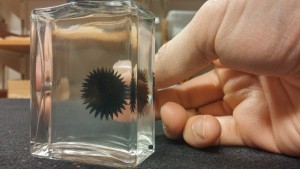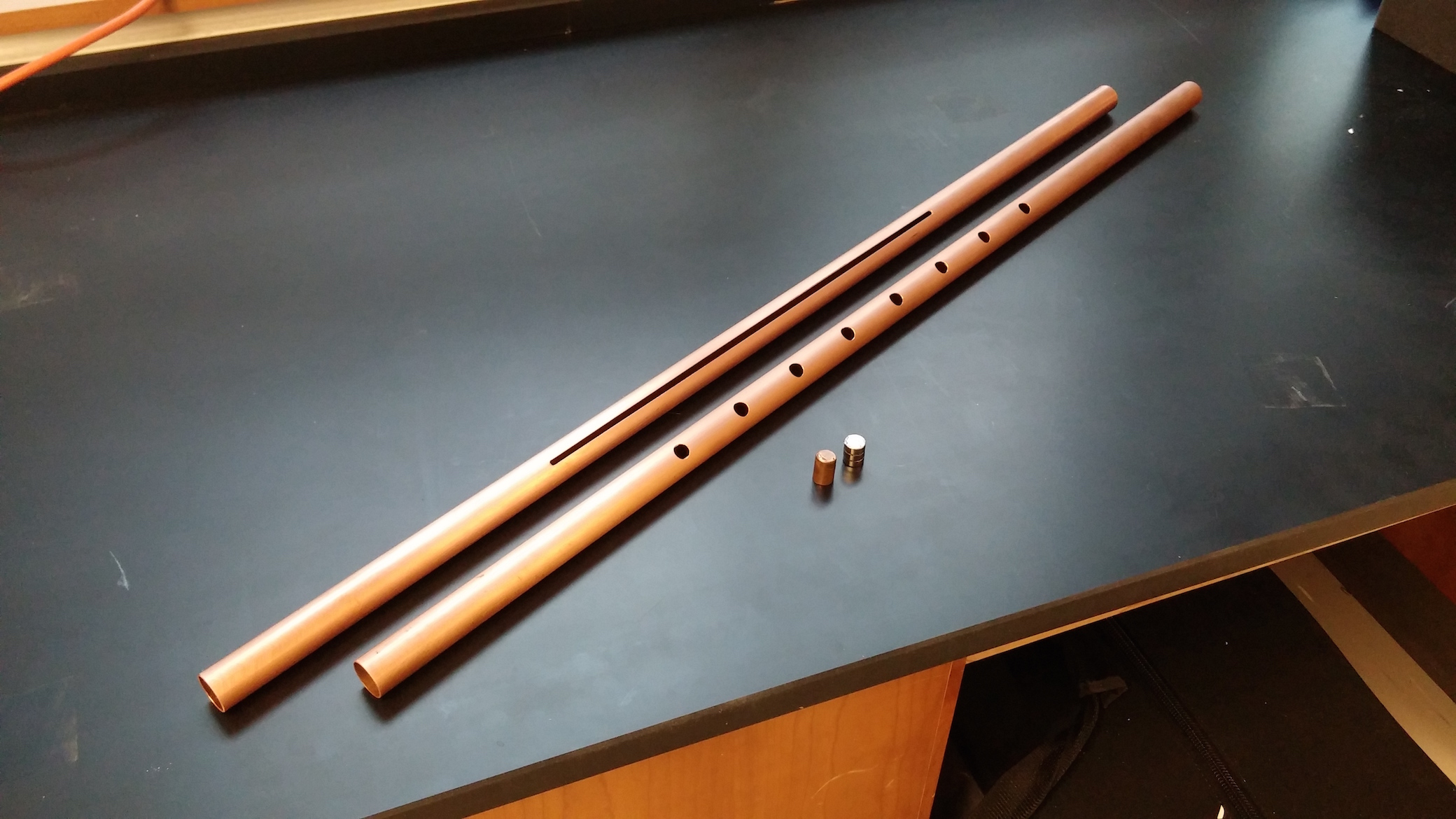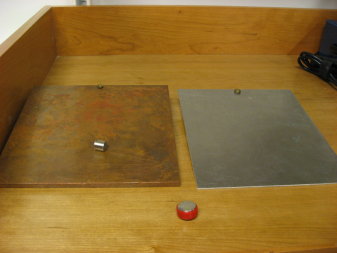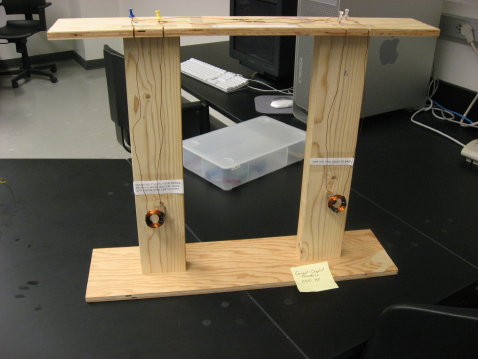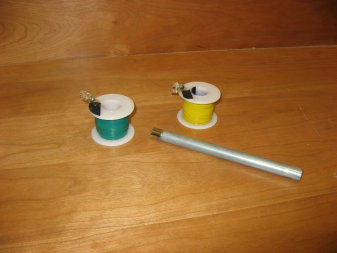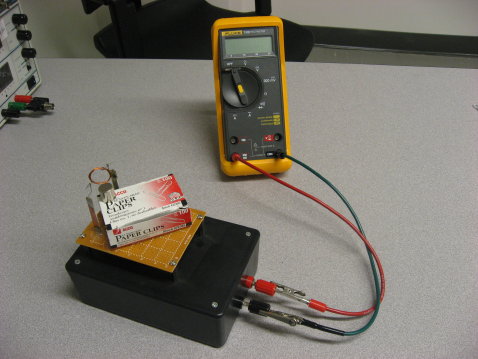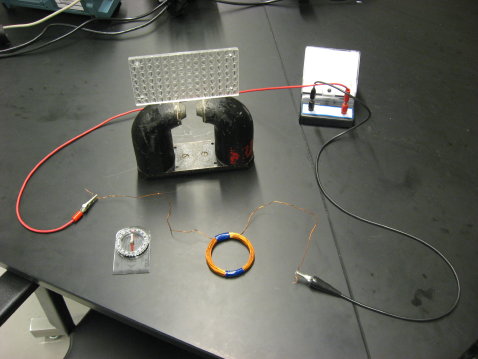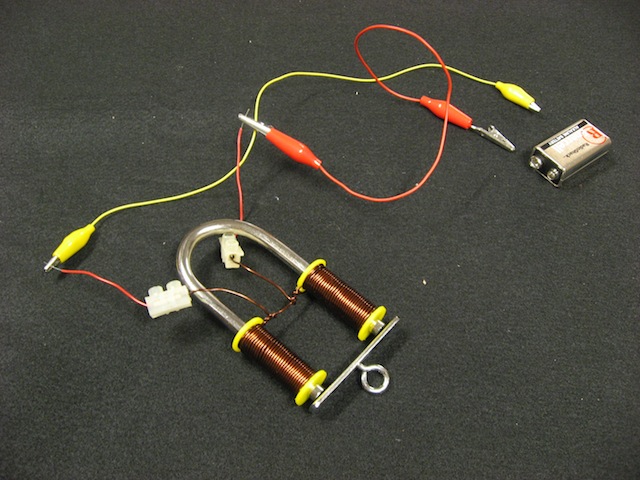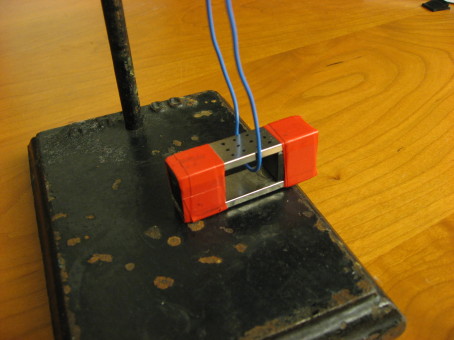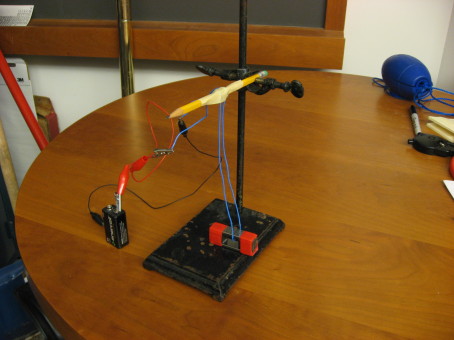Developed by NASA Scientist Steve Papell in the 1960’s, Ferrofluid is a colloidal liquid made of paramagnetic nano particles. When subjected to a magnetic field, the nanoparticles form regular patterns of peaks and valleys.
For an interesting list of modern applications see:https://en.wikipedia.org/wiki/Ferrofluid
- Located in L01, section B-2 (in bin with iron filings)

